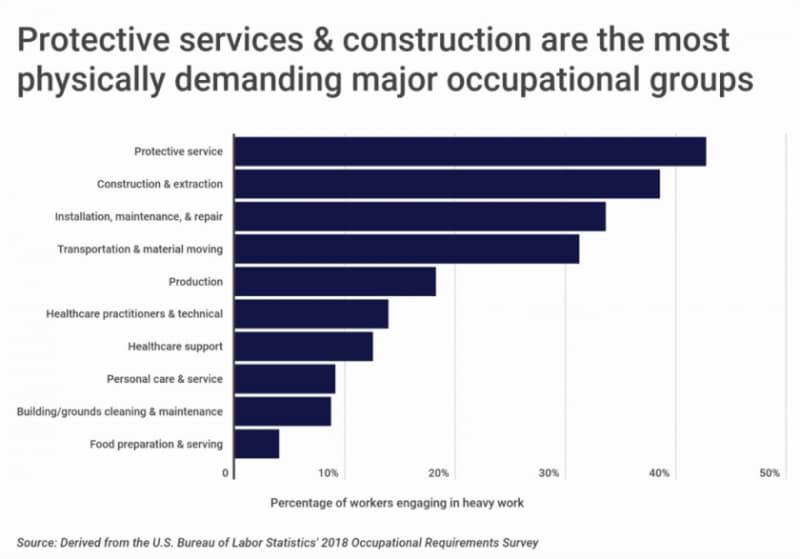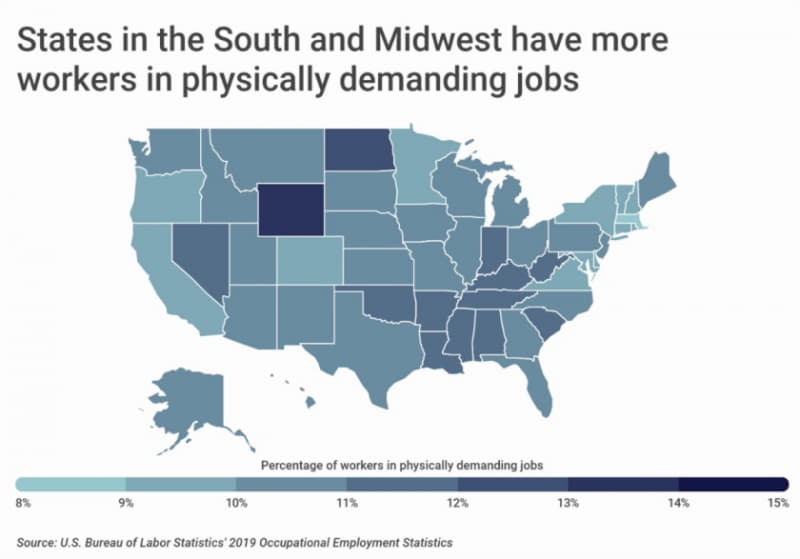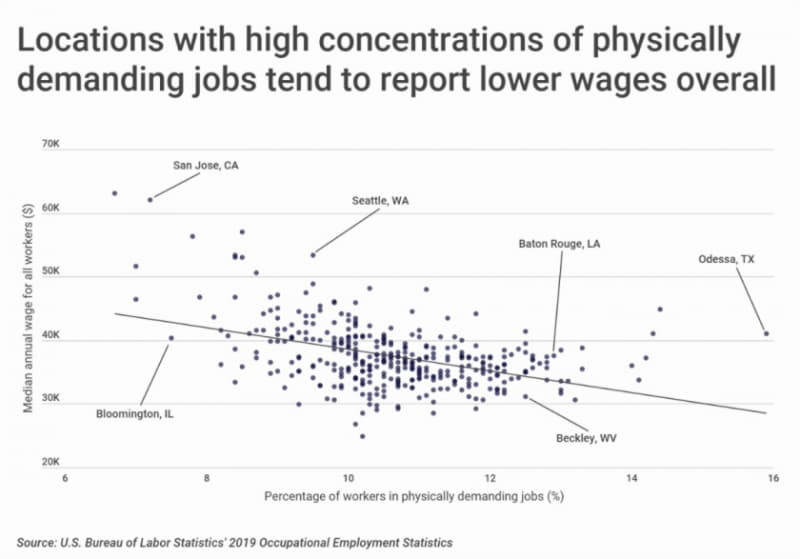The COVID-19 pandemic is responsible for the largest wave of job losses since the Great Depression. The mass layoffs caused by social distancing regulations have brought new meaning to the term “essential worker.” Today’s essential workers often hold some of the most physically demanding jobs. According to data from the Bureau of Labor Statistics, more than one-third of workers in protective service, construction, maintenance, and repair engage in physically demanding activity.

Nationally, over 10 percent of all workers hold physically demanding jobs, defined here as jobs where workers engage in heavy or very heavy work activities. A large portion of those physically demanding jobs are in transportation and material moving, which employs over 12.5 million workers in the U.S. Construction occupations also account for a significant number of workers in physically demanding roles, with nearly 2.3 million construction workers engaging in heavy or very heavy work.
At the state level, the largest share of workers in physically demanding jobs are found in Midwestern states such as North Dakota (12.4 percent of total jobs) and Southern states like Mississippi (11.9 percent of total jobs). Conversely, the lowest share of workers in physically demanding jobs are found in Northeastern states such as Massachusetts (8.8 percent of total jobs) and Connecticut (9.1 percent of total jobs).

To profile cities with the largest percentage of workers in physically demanding jobs, researchers from Construction Coverage analyzed data from the U.S. Bureau of Labor Statistics. Employment and wage data were derived from 2019 Occupational Employment Statistics, while information on the physical requirements of occupations was taken from the 2018 Occupational Requirements Survey. Physical demand was measured by the strength requirements necessary to perform the duties of a given occupation.
Locations with a greater prevalence of physically demanding jobs tend to have lower overall wages. In locations where more than 10 percent of workers are in physically demanding jobs, the average median annual wage is slightly above $36,000. By comparison, the average median annual wage in locations where less than 10 percent of workers engage in physically demanding jobs is $41,000. Despite this trend, physically demanding jobs often require only a high school diploma or less. Adjusting for educational attainment, workers with physically demanding jobs actually tend to earn more than workers with similar education in different jobs.

The analysis found that a total of 274,050 workers in the Philadelphia metro area work in physically demanding occupations, representing 9.5% of the total Philadelphia workforce. Here is a summary of the data for the Philadelphia-Camden-
- Percentage of workers in physically demanding jobs: 9.5%
- Total workers in physically demanding jobs: 274,050
- Total workers across all jobs: 2,876,370
- Protective service workers: 72,960
- Construction workers: 90,580
- Installation, maintenance, and repair workers: 98,180
- Transportation and moving workers: 234,890
- Median annual wage (all workers): $43,840
For reference, here are the statistics for the entire United States:
- Percentage of workers in physically demanding jobs: 10.3%
- Total workers in physically demanding jobs: 15,061,140
- Total workers across all jobs: 146,875,480
- Protective service workers: 3,498,800
- Construction workers: 6,194,140
- Installation, maintenance, and repair workers: 5,713,450
- Transportation and moving workers: 12,532,030
- Median annual wage (all workers): $39,810
For more information, a detailed methodology, and complete results, you can find the original report on Construction Coverage’s website: https://constructioncoverage.









